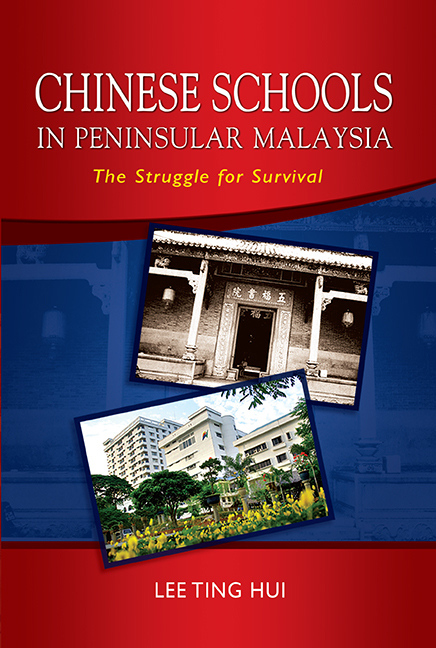Book contents
- Frontmatter
- Contents
- Acknowledgements
- Abbreviations
- Notes on Coverage and Names
- Introduction
- 1 The Years before the Pacific War
- 2 From the Japanese Occupation to Self-Government
- 3 Towards the “Ultimate Objective” of One-medium Education
- 4 One-medium Education under Rukun Negara and the New Economic Policy
- 5 The 1980s: A Decade of Continuing Challenges for the Chinese Schools
- 6 Vision 2020 and the Chinese Schools
- 7 Conclusion: Challenges and Responses
- Glossary
- Bibliography
- Index
- About the Author
6 - Vision 2020 and the Chinese Schools
Published online by Cambridge University Press: 21 October 2015
- Frontmatter
- Contents
- Acknowledgements
- Abbreviations
- Notes on Coverage and Names
- Introduction
- 1 The Years before the Pacific War
- 2 From the Japanese Occupation to Self-Government
- 3 Towards the “Ultimate Objective” of One-medium Education
- 4 One-medium Education under Rukun Negara and the New Economic Policy
- 5 The 1980s: A Decade of Continuing Challenges for the Chinese Schools
- 6 Vision 2020 and the Chinese Schools
- 7 Conclusion: Challenges and Responses
- Glossary
- Bibliography
- Index
- About the Author
Summary
The 1990s into the year 2003 saw the continued rule of Mahathir Mohamad as the prime minister of the country. Mahathir introduced a grand vision for the development of the country called Vision 2020. While the new regime brought blessings to the Chinese schools in certain ways, it also created difficulties for them in other respects. There were occasions of joy as well as occasions of disappointment.
Vision 2020, Smart Schools and Vision Schools
Under the inspiration of Vision 2020, the schools in the country, including Chinese schools, were to be converted into Smart Schools. They were also to become Vision Schools. While the Smart School scheme was of benefit indirectly to the Chinese schools, the Vision School plan would work to their disadvantage.
Vision 2020
On 28 February 1991, in an address to a business conference, Mahathir broached the idea of Vision 2020. In his visualization, from 1991 to 2020, Malaysia should develop to become an advanced country. There were to be two dimensions to the plan, viz, economic and social. The economic target was to double the Gross Domestic Product of the country every ten years, and the social target was to do away with ethnicity in every aspect, and see the evolution of a unified society. He also mentioned that the nation must meet a series of challenges, economic or social in nature, to achieve these aims. The challenges, which could be considered to be economic in nature, were as follows:
To build a prosperous society which would be economically competitive and which would be spirited, alert, and resilient.
To build a society which would be scientifically progressive, creative, and far-sighted. Its people would not only be consumers of modern science and technology, but also contributors to such science and technology in future.
To build a society which would be free, peaceful, confident and proud of its achievements, and in possession of sufficient alertness to meet obstacles of all kinds. […]
- Type
- Chapter
- Information
- Chinese Schools in Peninsular MalaysiaThe Struggle for Survival, pp. 187 - 217Publisher: ISEAS–Yusof Ishak InstitutePrint publication year: 2011

